
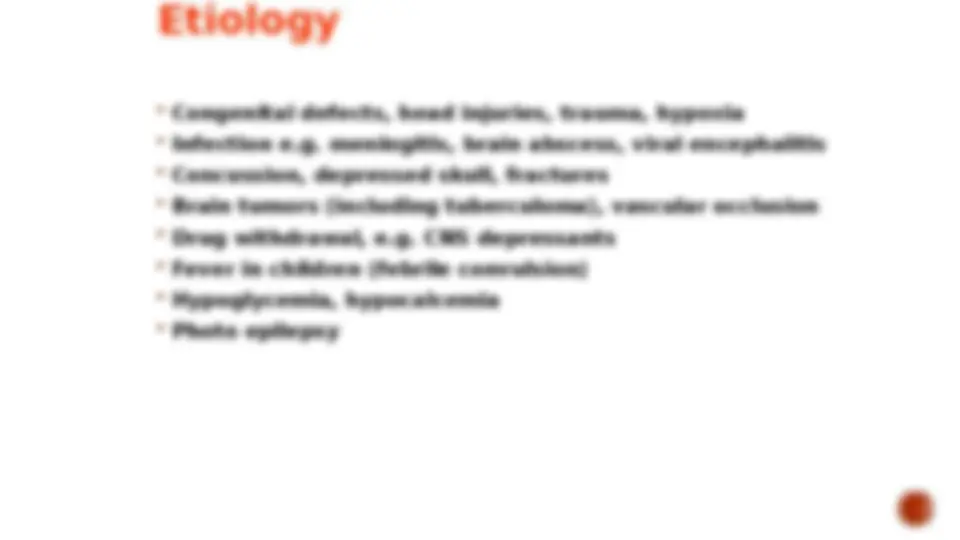
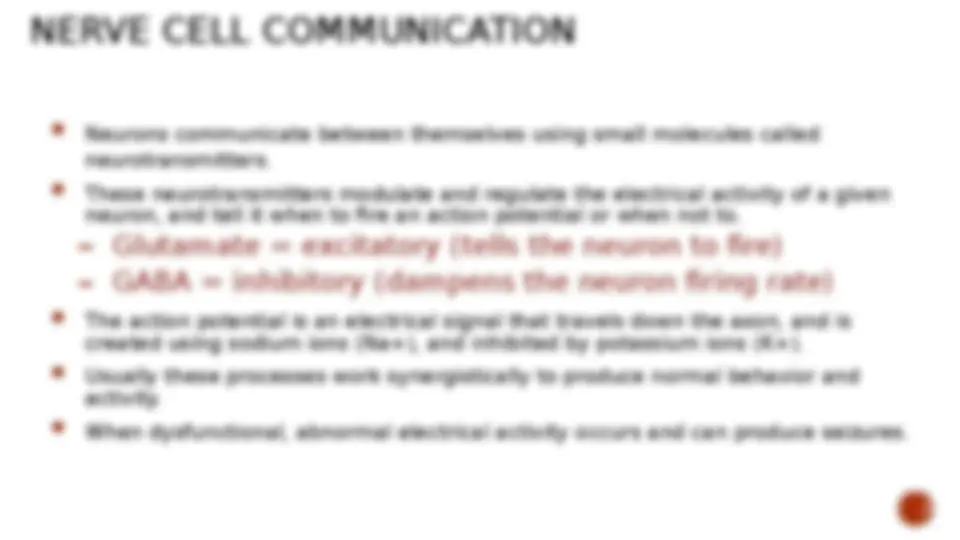
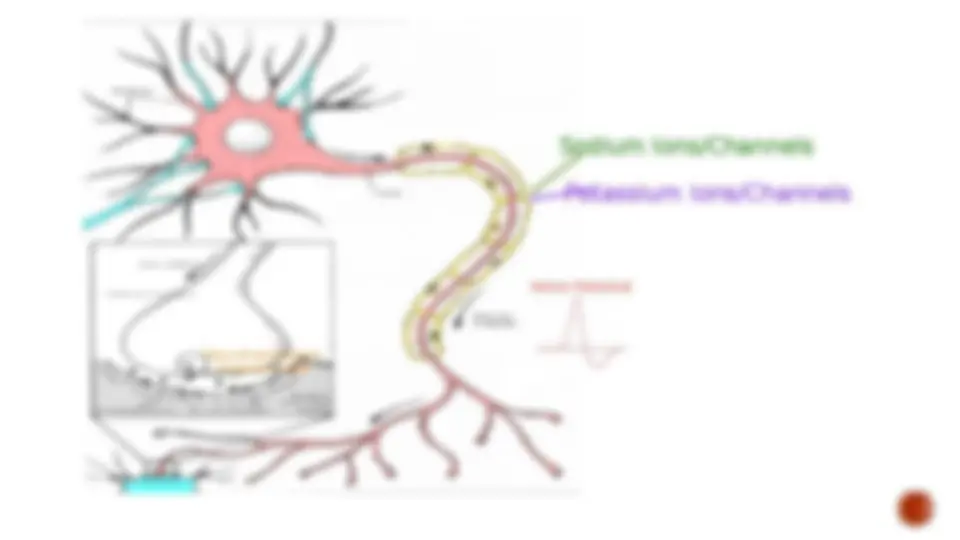
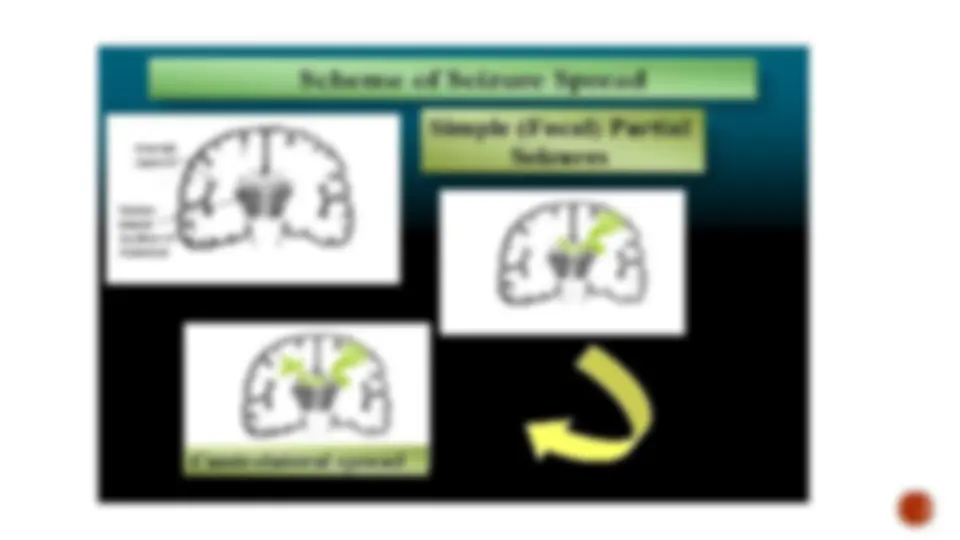
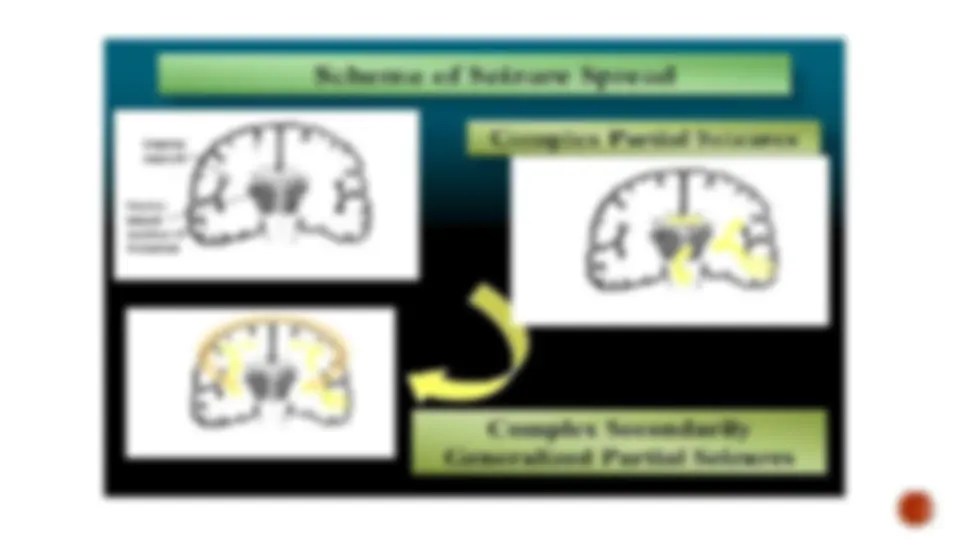
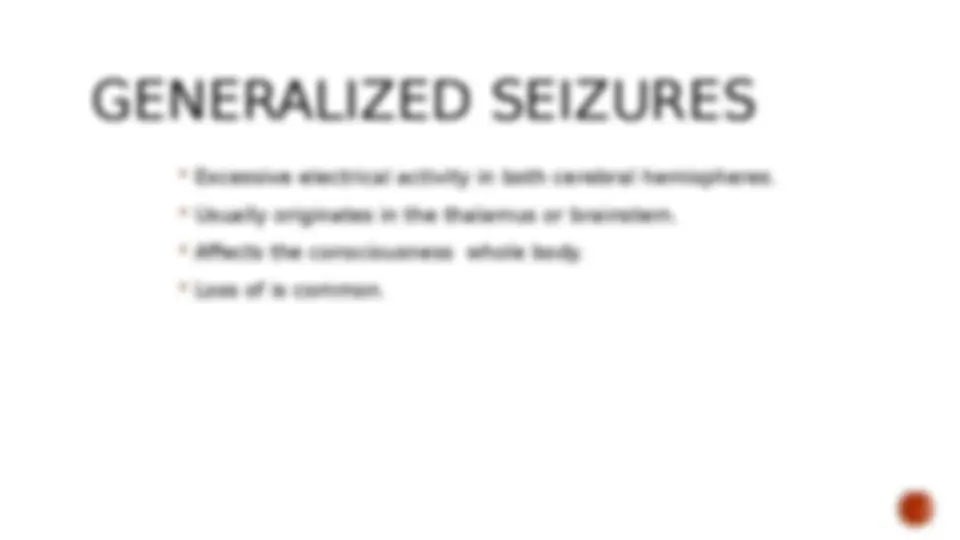
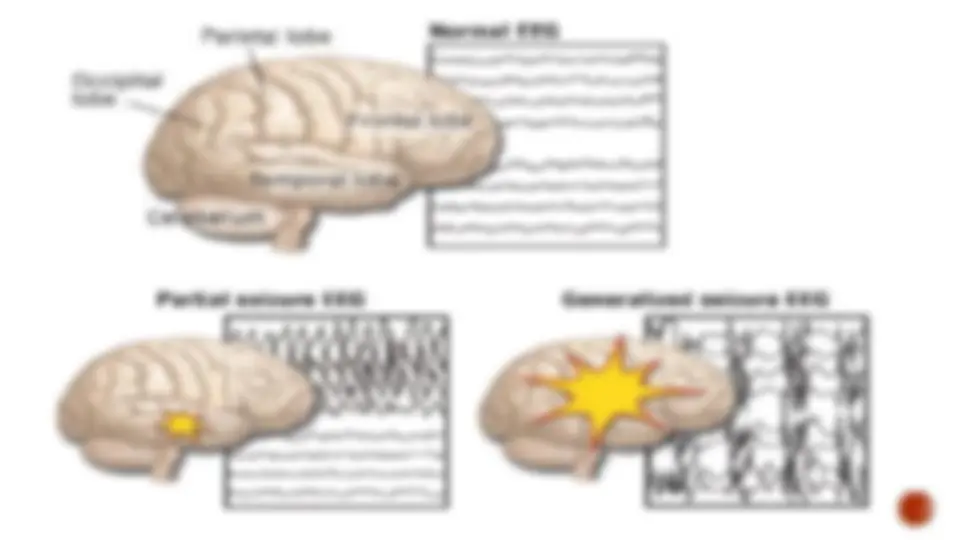
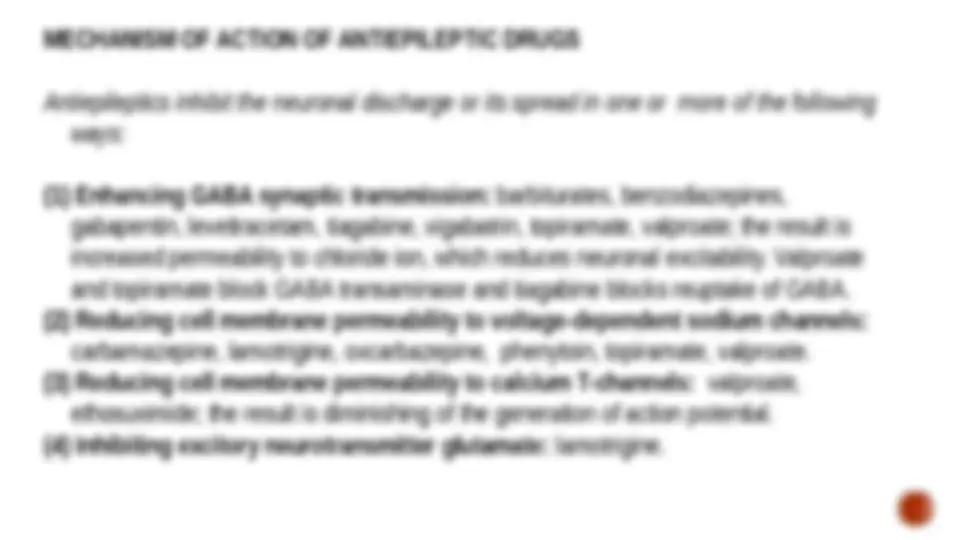
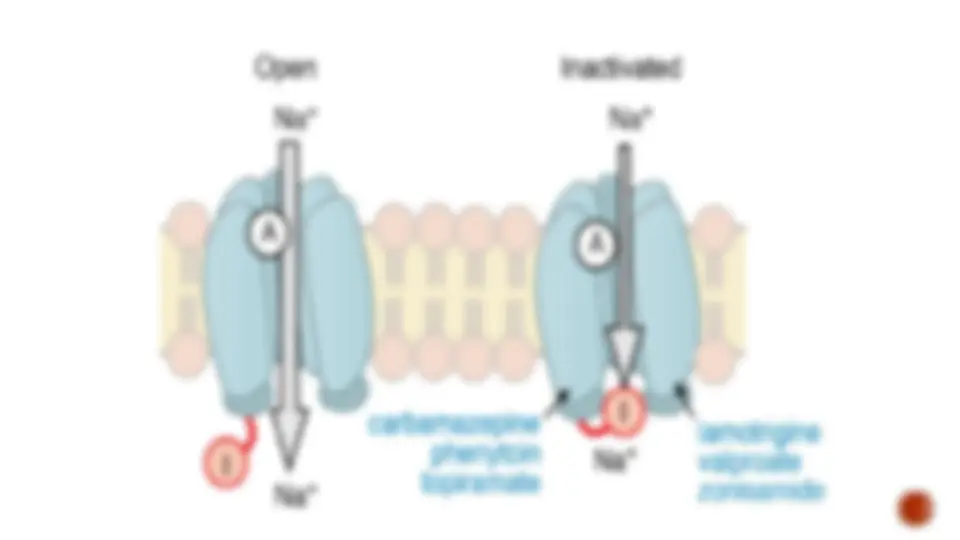
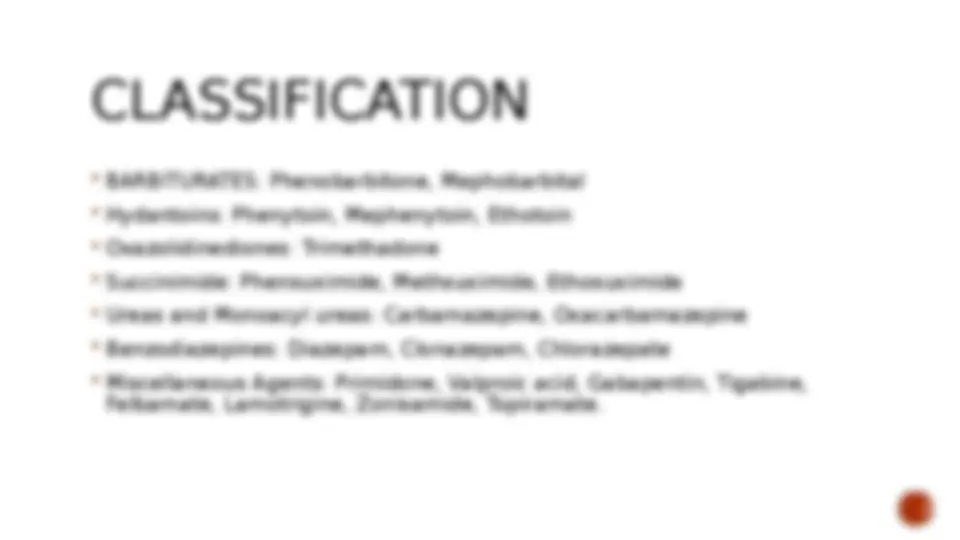
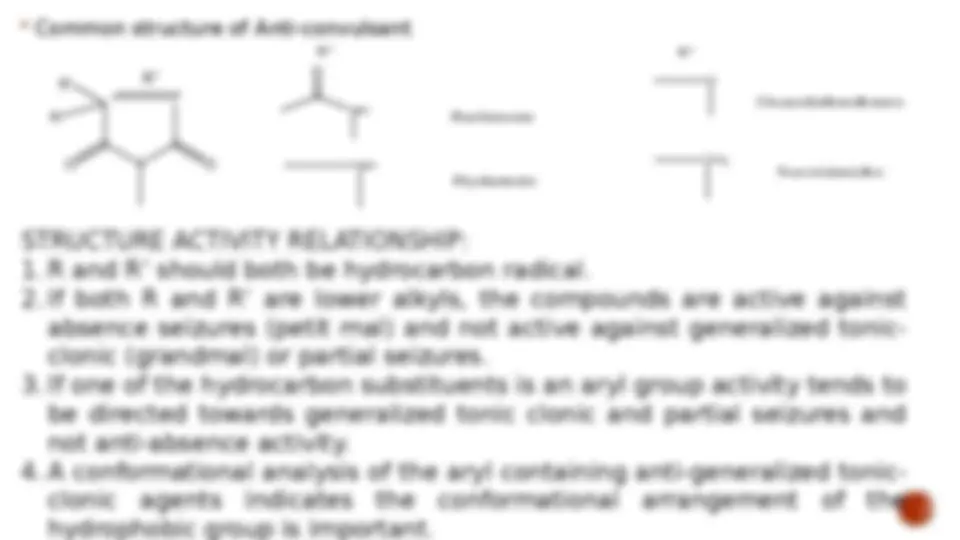
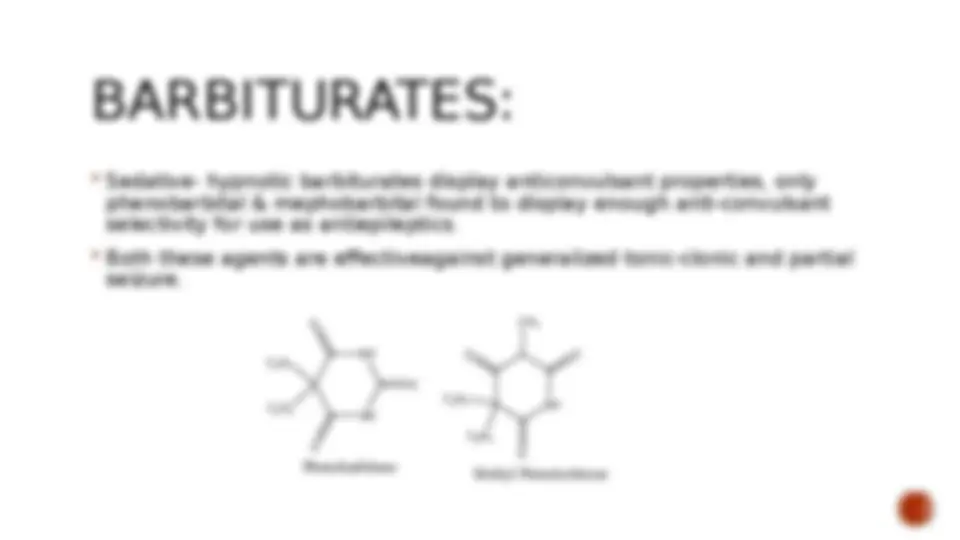
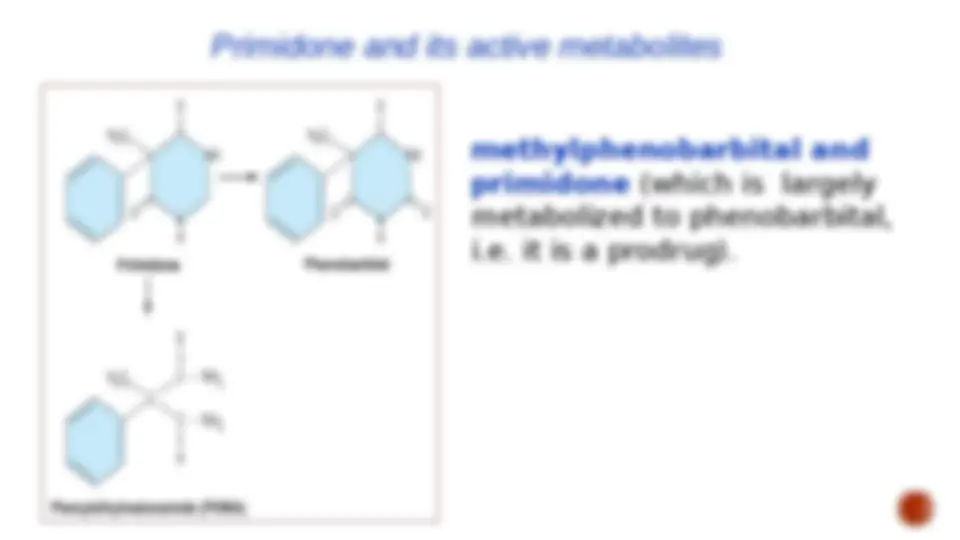
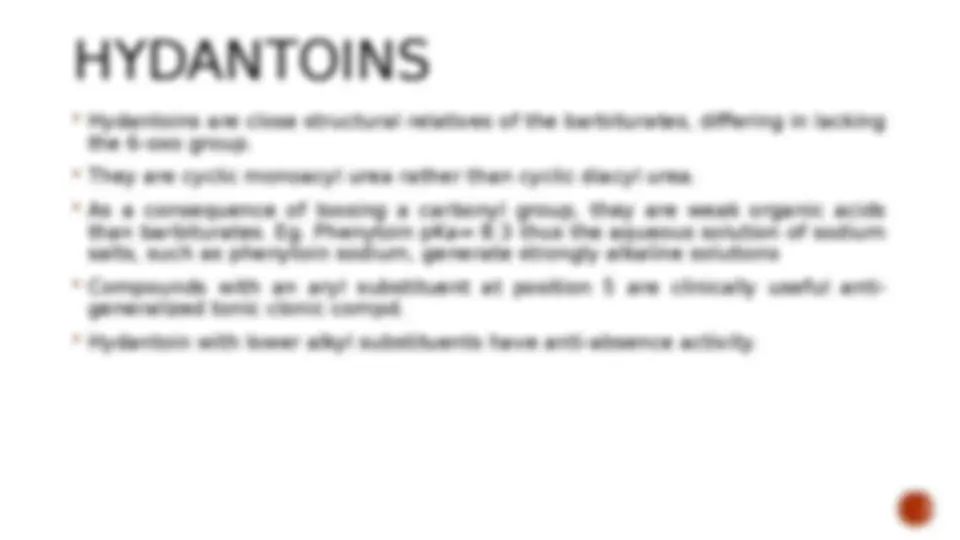
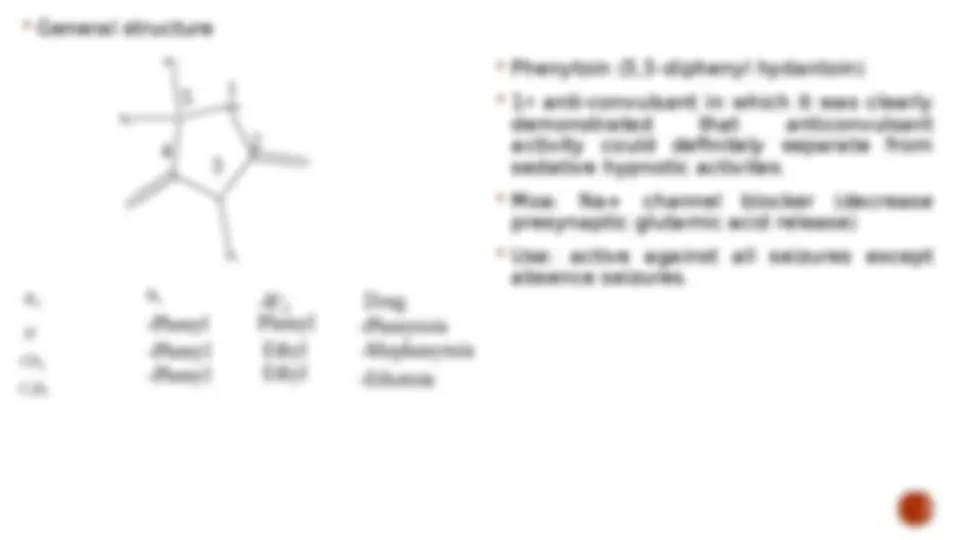
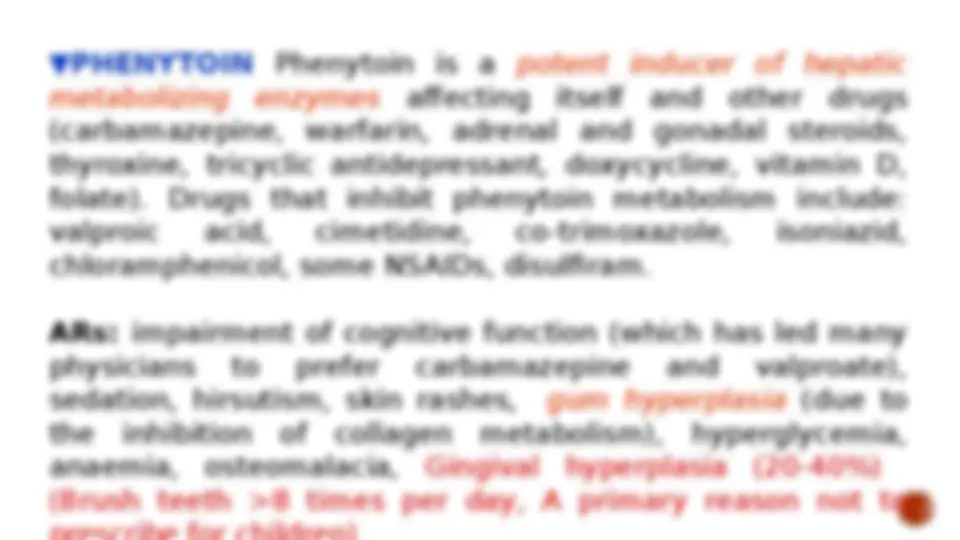
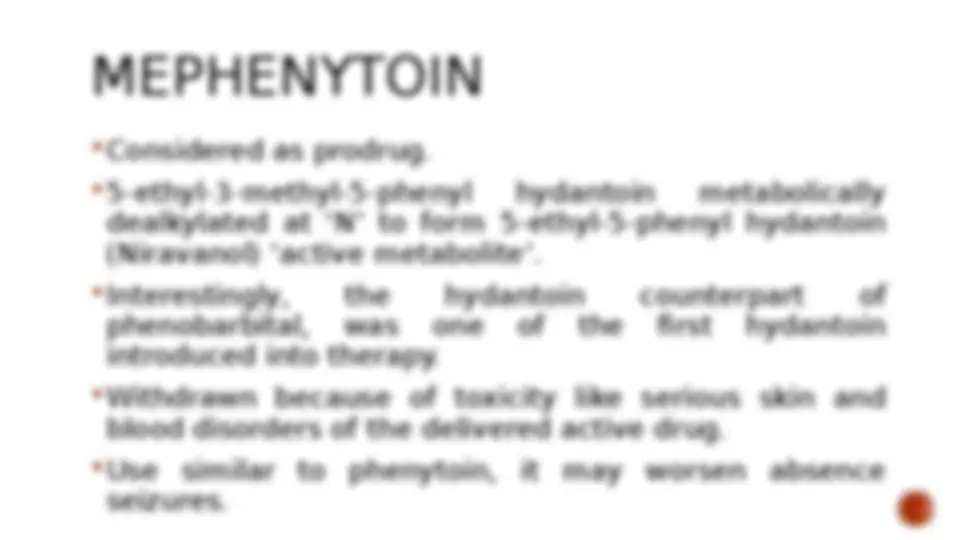
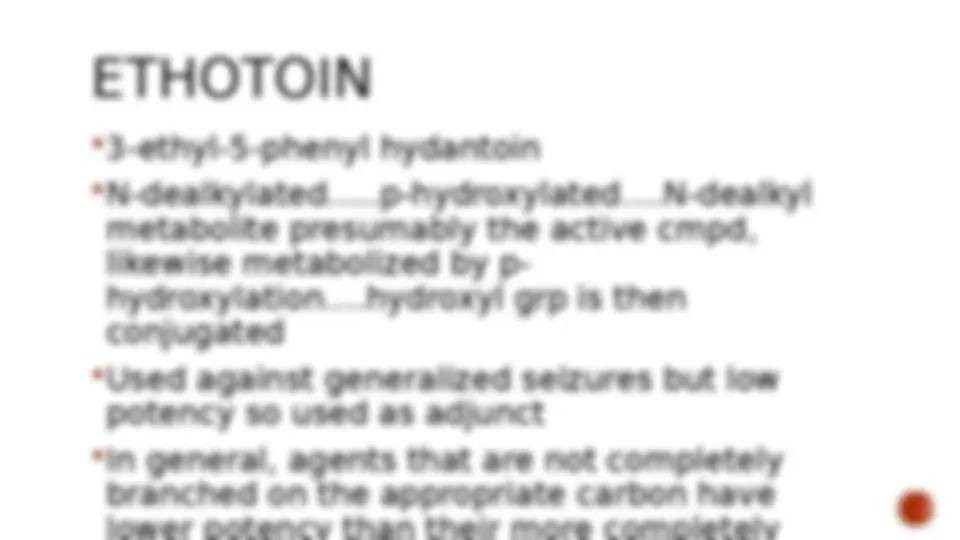
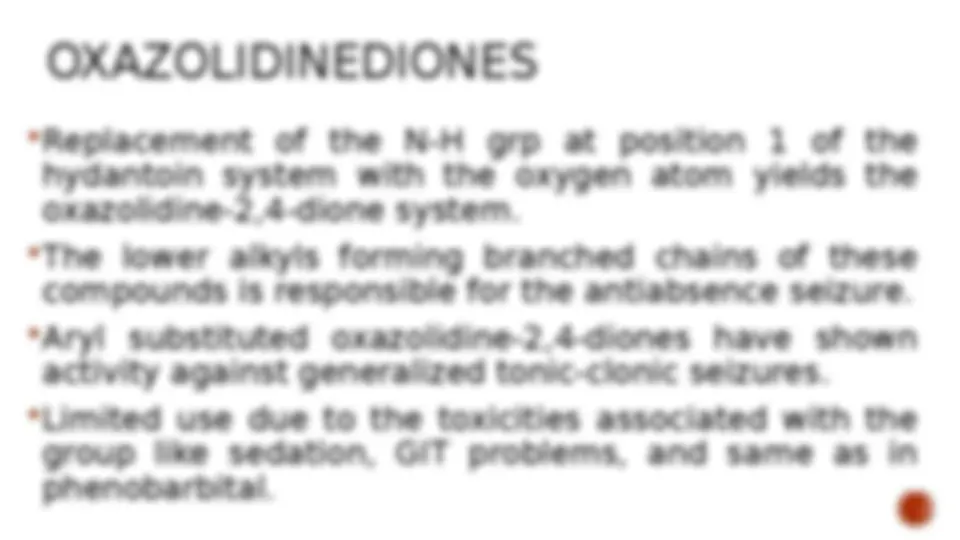
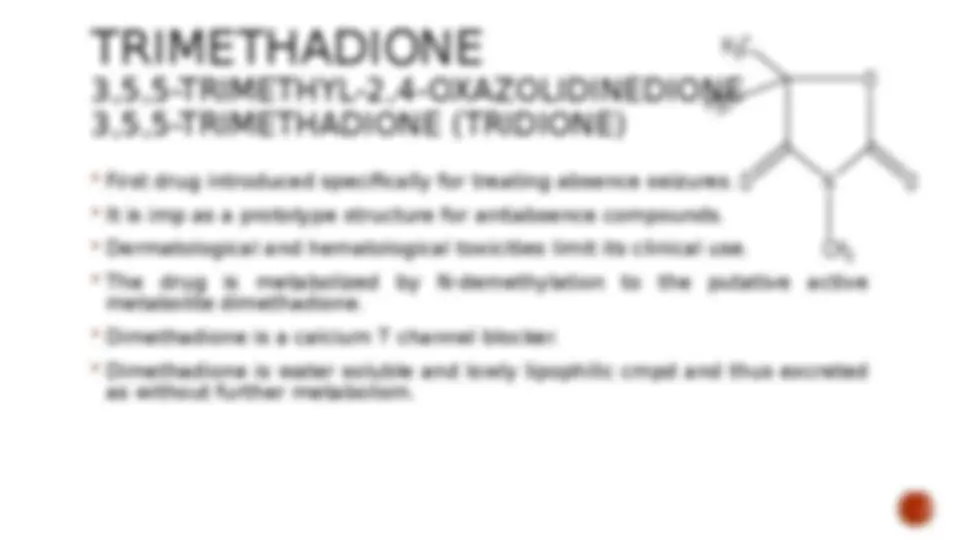
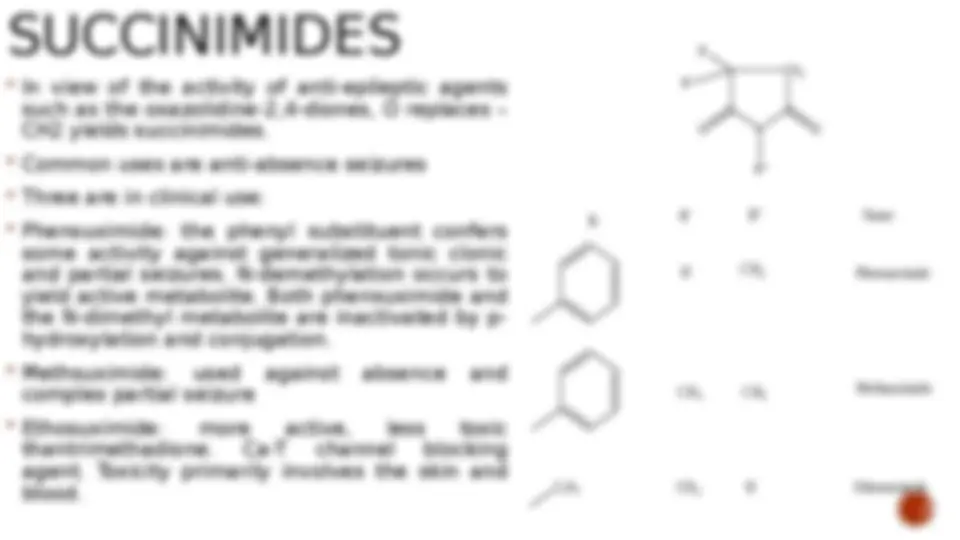
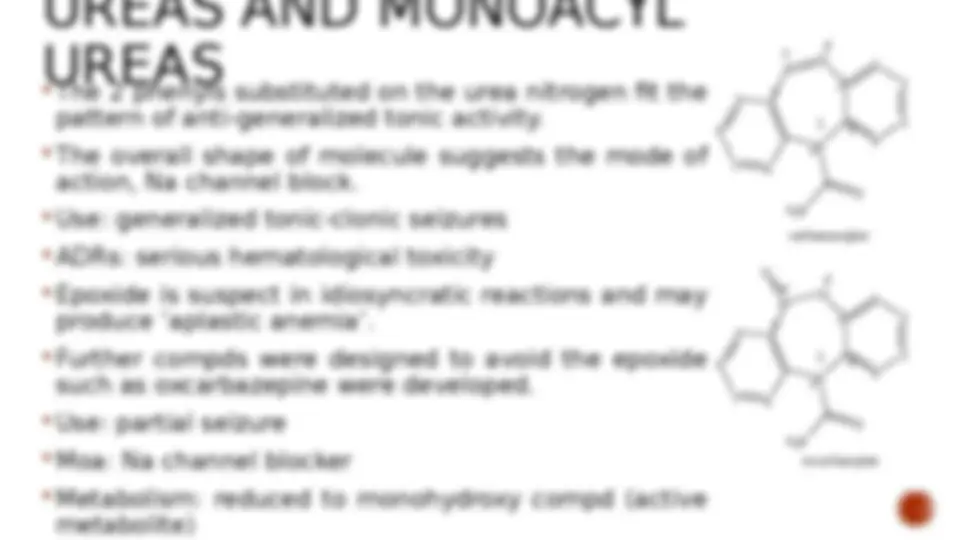
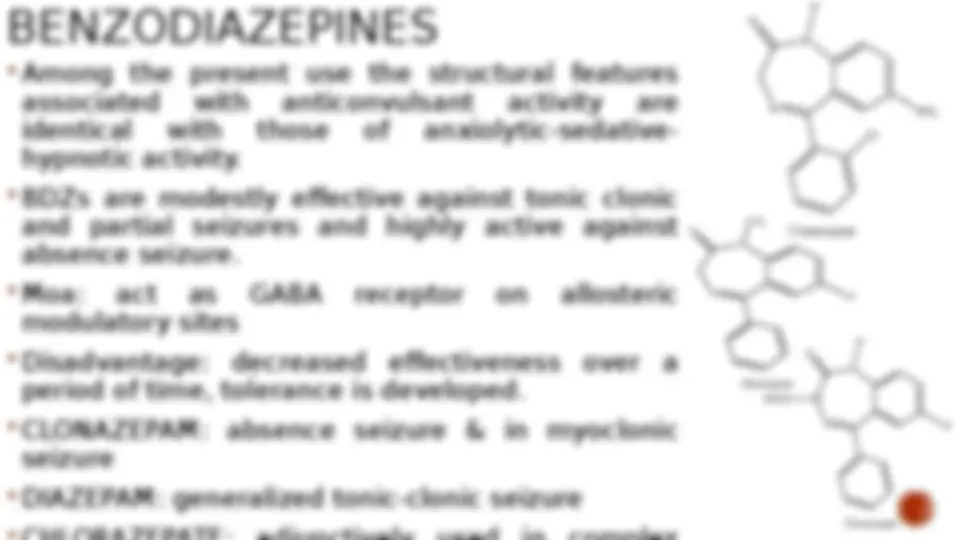
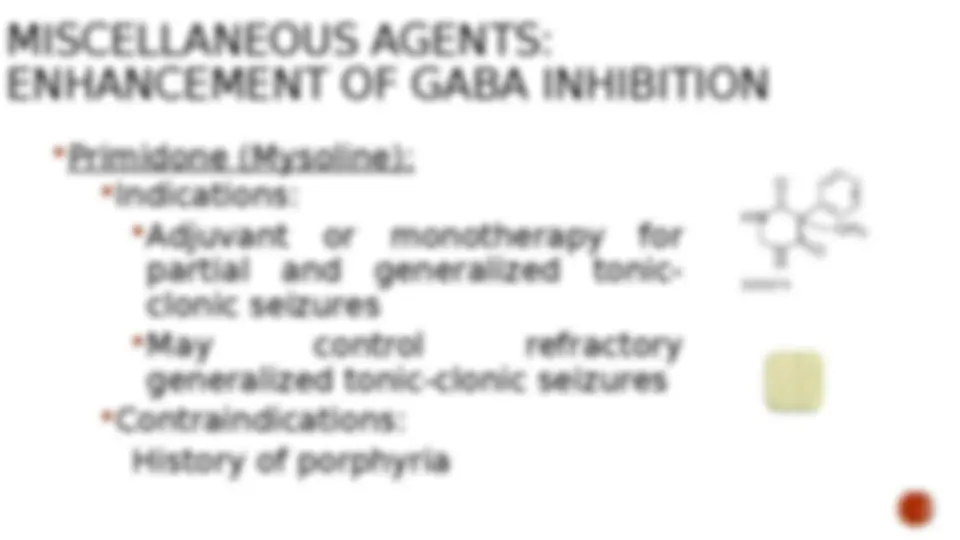
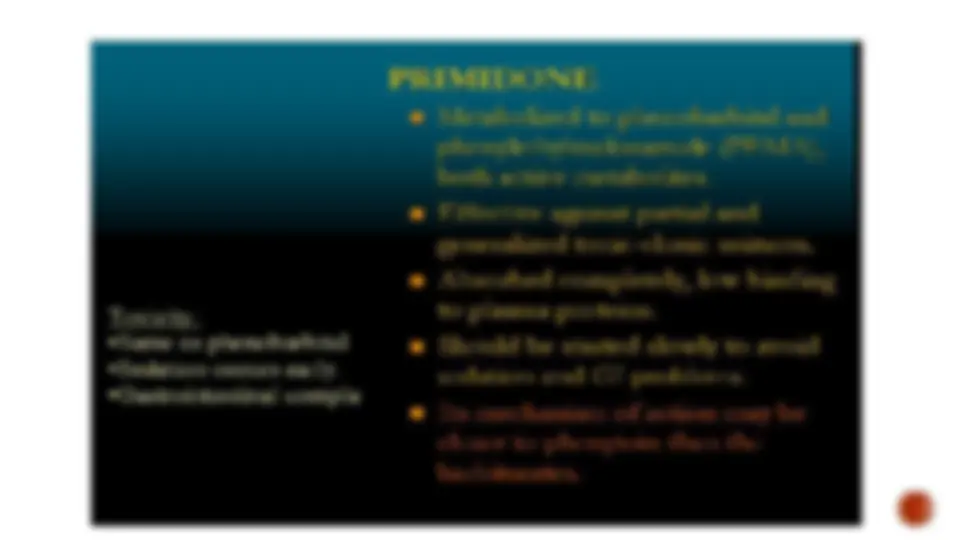
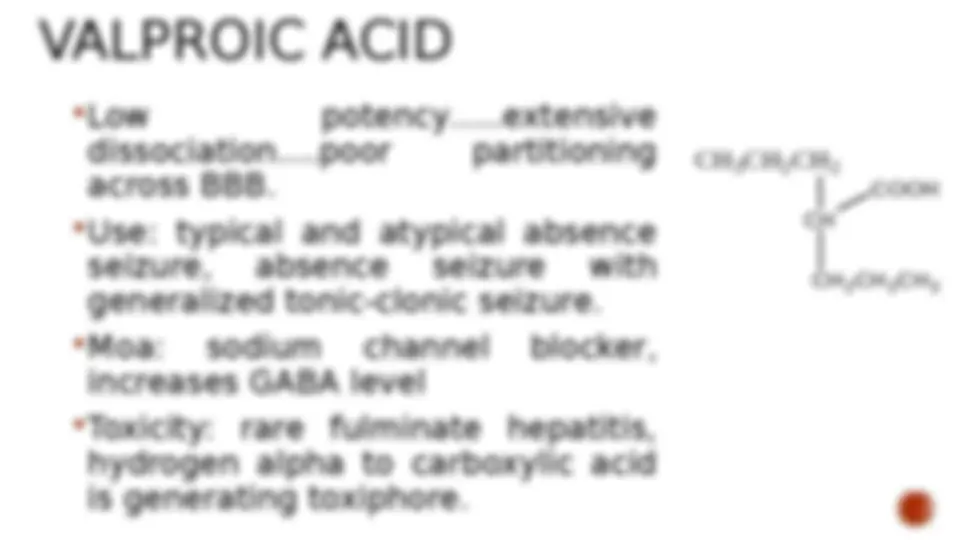


Study with the several resources on Docsity

Earn points by helping other students or get them with a premium plan


Prepare for your exams
Study with the several resources on Docsity

Earn points to download
Earn points by helping other students or get them with a premium plan
Community
Ask the community for help and clear up your study doubts
Discover the best universities in your country according to Docsity users
Free resources
Download our free guides on studying techniques, anxiety management strategies, and thesis advice from Docsity tutors
structure activity relationship of epilepsy
Typology: Lecture notes
1 / 34

This page cannot be seen from the preview
Don't miss anything!



























EPILEPSY (^) It is a Chronic medical condition produced by sudden changes in the electrical function of the brain. (^) It is a condition characterized by recurrent episodes of seizures. (^) Seizure- a paroxysmal abnormal discharge at high frequency from neurons in cerebral cortex. (^) Convulsions- involuntary, violent, spasmodic contractions of skeletal muscles. (^) WHO Background
Neurons communicate between themselves using small molecules called neurotransmitters. These neurotransmitters modulate and regulate the electrical activity of a given neuron, and tell it when to fire an action potential or when not to.
The action potential is an electrical signal that travels down the axon, and is created using sodium ions (Na+), and inhibited by potassium ions (K+). Usually these processes work synergistically to produce normal behavior and activity. When dysfunctional, abnormal electrical activity occurs and can produce seizures.
Neurotransmitters
Action Potential (Glutamate, GABA)
PARTIAL (FOCAL) SEIZURES (^) Excessive electrical activity in one cerebral hemisphere. -Affects only part of the body. (^) Simple Partial: Person may experience a range of strange or unusual sensations. Confined to single muscle group or limb.
(^) Complex Partial :
GENERALIZED SEIZURES (^) Excessive electrical activity in both cerebral hemispheres. (^) Usually originates in the thalamus or brainstem. (^) Affects the consciousness whole body. (^) Loss of is common.
MECHANISM OF ACTION OF ANTIEPILEPTIC DRUGS Antiepileptics inhibit the neuronal discharge or its spread in one or more of the following ways : (1) Enhancing GABA synaptic transmission: barbiturates, benzodiazepines, gabapentin, levetiracetam, tiagabine, vigabatrin, topiramate, valproate; the result is increased permeability to chloride ion, which reduces neuronal excitability. Valproate and topiramate block GABA transaminase and tiagabine blocks reuptake of GABA. (2) Reducing cell membrane permeability to voltage-dependent sodium channels: carbamazepine, lamotrigine, oxcarbazepine, phenytoin, topiramate, valproate. (3) Reducing cell membrane permeability to calcium T-channels: valproate, ethosuximide; the result is diminishing of the generation of action potential. (4) Inhibiting excitory neurotransmitter glutamate: lamotrigine.
(^) Common structure of Anti-convulsant
O N O R' R R'' R'' NH O Barbiturate NH Hydantoin R'' O CH 2 Oxazolidinediones Succinimides
BARBITURATES: (^) Sedative- hypnotic barbiturates display anticonvulsant properties, only phenobarbital & mephobarbital found to display enough anti-convulsant selectivity for use as antiepileptics. (^) Both these agents are effectiveagainst generalized tonic-clonic and partial seizure. NH NH O O O C 2 H 5 C 6 H 5 Phenobarbitone NH N C 6 H 5 C 2 H 5 CH 3 O O O Methyl Phenobarbitone